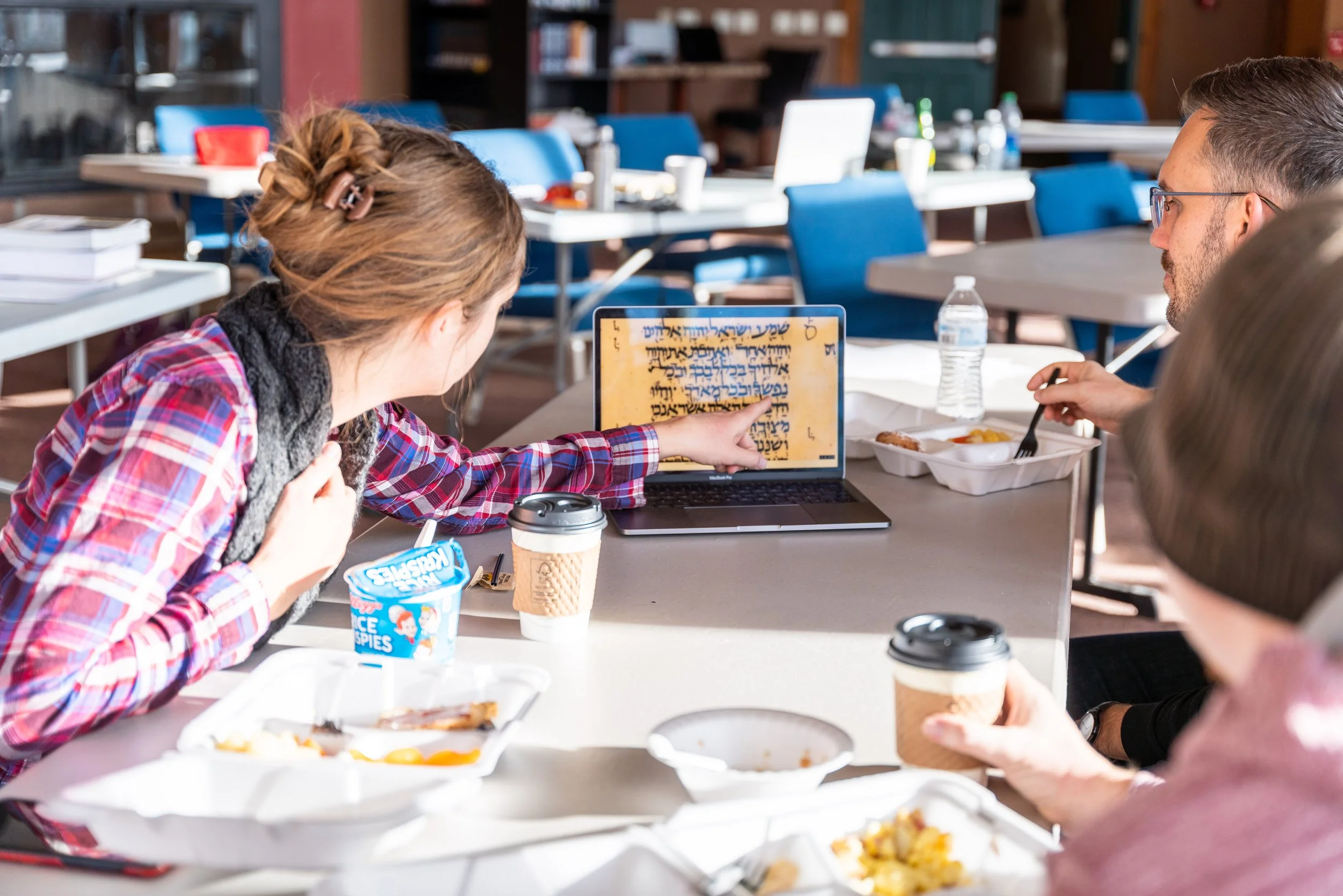The Tennent program, by the numbers:
1:3
There is approximately a 1:3 faculty-to-student ratio at Tennent.
1
one of the required residencies will take place overseas
12
Students participate in consistent cohorts of about 12 classmates.
4
four broad subjects make up the tennent core: Old Testament, New Testament, Applied Theology, & Historical Theology
150
meals together with classmates, families, and professors
Each term, every seminary student will take classes in Old Testament, New Testament, Applied Theology, and Historical Theology, from a faculty team of scholarly, passionate, experienced practitioners of ministry.
Between residencies, over the course of the program, students will take a deeper dive into a chosen concentration under the direction of an advisor (either completing a thesis, or going further with the biblical languages), as well as prepare for the upcoming residency. In addition, students will have periodic supervision appointments to keep in touch and stay on track.
This model allows for both planning and flexibility. Planning, because every student knows well in advance when they will be gone, and flexibility, because most of the year, back home, students can schedule their research around their ministry world.
Pace of Study
Students at Tennent can choose their pace of study. We offer a full-time and a part-time option to accommodate students’ schedules. Students on the full-time rhythm spend four weeks per year on site, and finish within three years, while the part-time students join us for only two weeks per year, and stretch it out. The content within each degree is identical, regardless of students’ chosen pace.
Full-Time Rhythm:
All students complete four two-week residencies on-site in Colorado prior to the overseas trip. M.Div. students will return for one final residency, lengthening their degree by one additional semester.
Part-Time Rhythm:
Part-time students can choose between annual two-week residencies (see “annual rhythm,” below) or split those residencies into shorter, more frequent sessions (“semester rhythm,” below). The annual rhythm is perfect for students who prefer to travel less frequently, while the semester rhythm is more convenient for those who have a hard time taking two weeks off at once.
One difference between the two approaches is that the annual rhythm includes all four core classes simultaneously, spreading the engagement of every subject across an entire year. The semester rhythm, on the other hand, allows students to focus on two core classes at a time.
Sample Residency Schedule
A typical day at a residency:
8:00: Families gather for breakfast. Walk back the long way for a little extra exercise.
9:00-10:30: Historical Theology Course
10:45-12:15: Old Testament Course
12:15-1:45: Lunch—pester your professor with additional questions, invite your spouse into the conversation, and share a joke with a five-year-old.
1:45-3:15: New Testament Course
3:30-5:00: Applied Theology Course
5:30-9:30: Keep those lively conversations going over dinner. Go for a walk with your spouse. Get competitive with ping-pong or a little basketball—adults versus kids? Sit by the fire with your professors and classmates and laugh until you cry.




